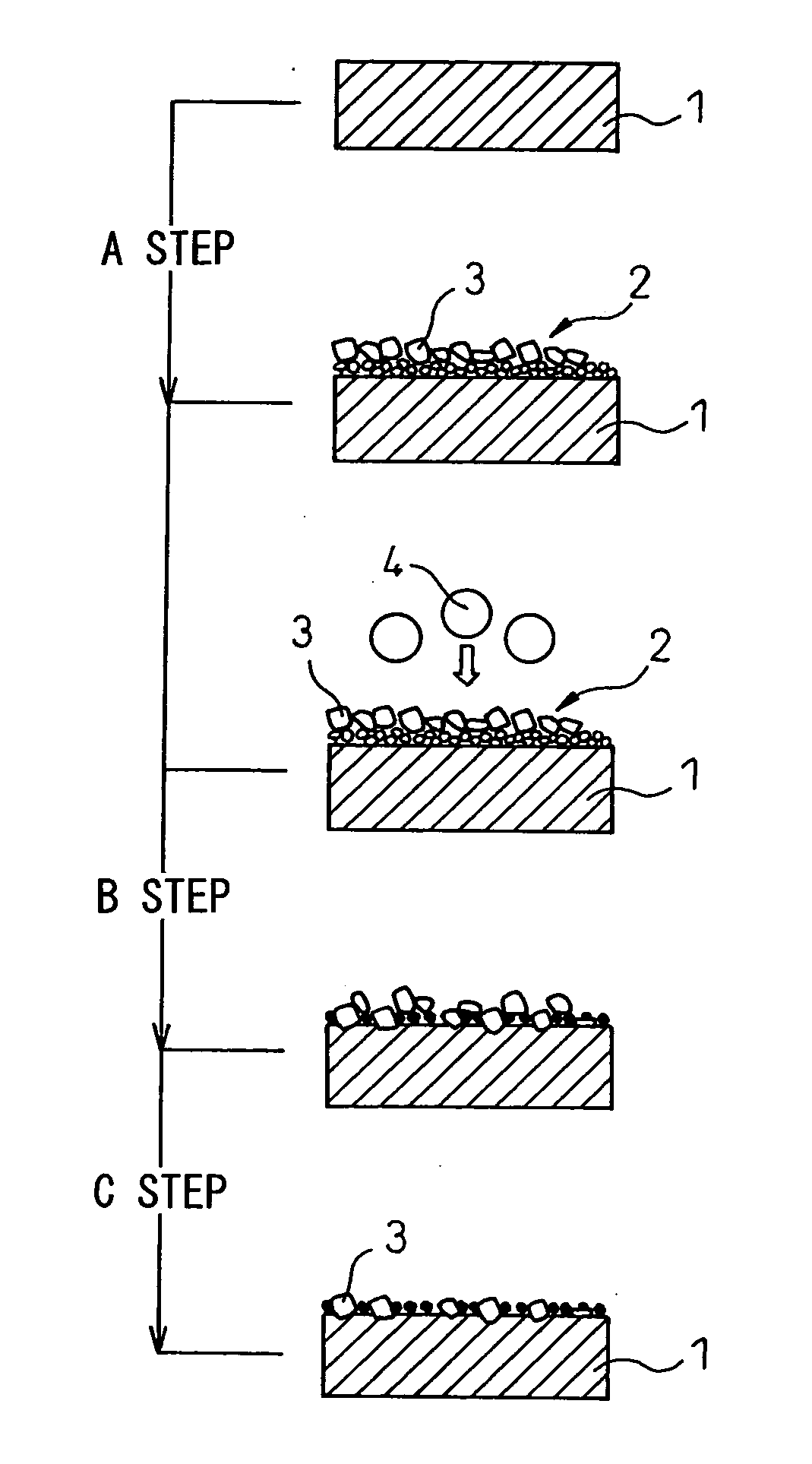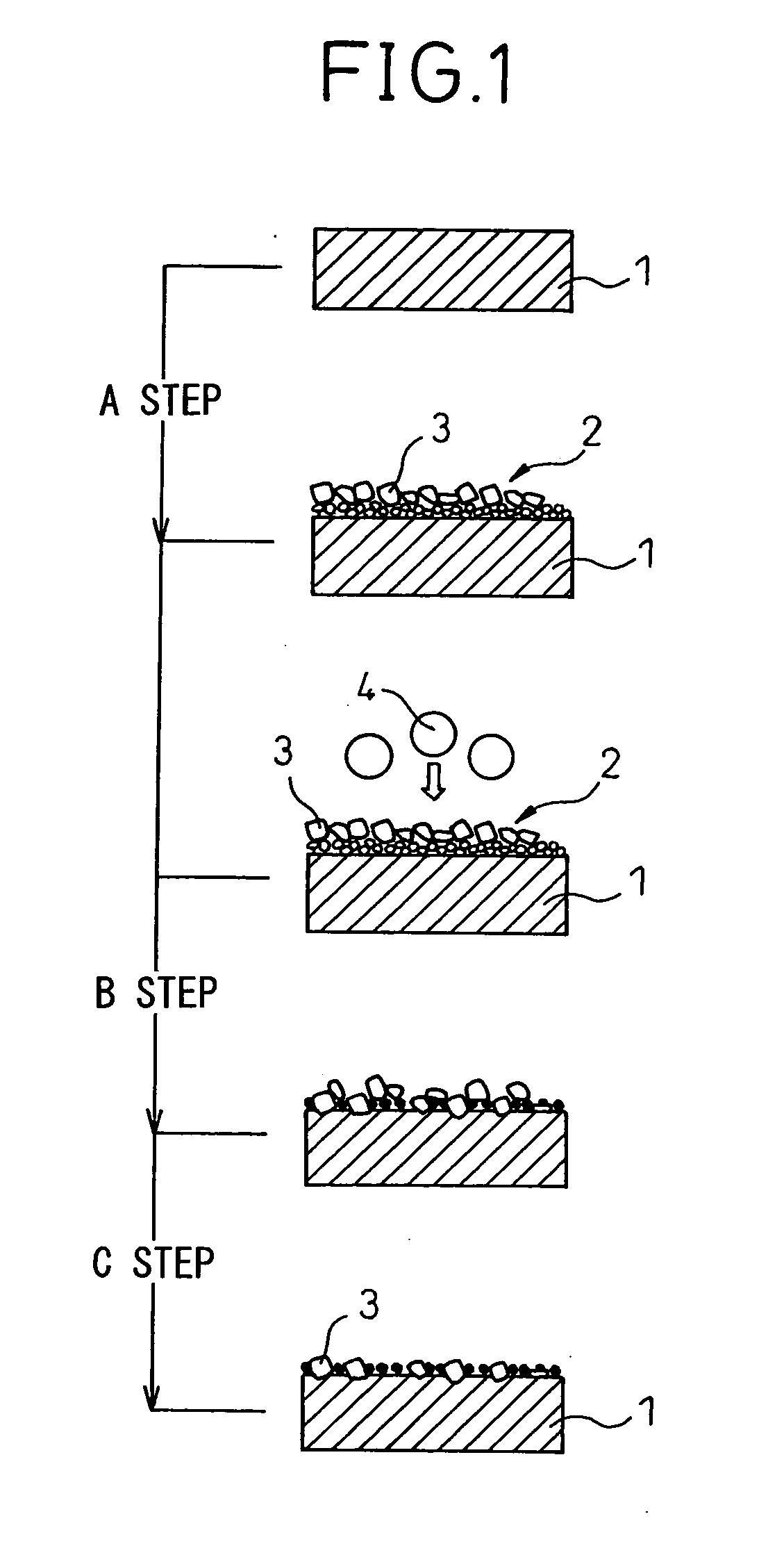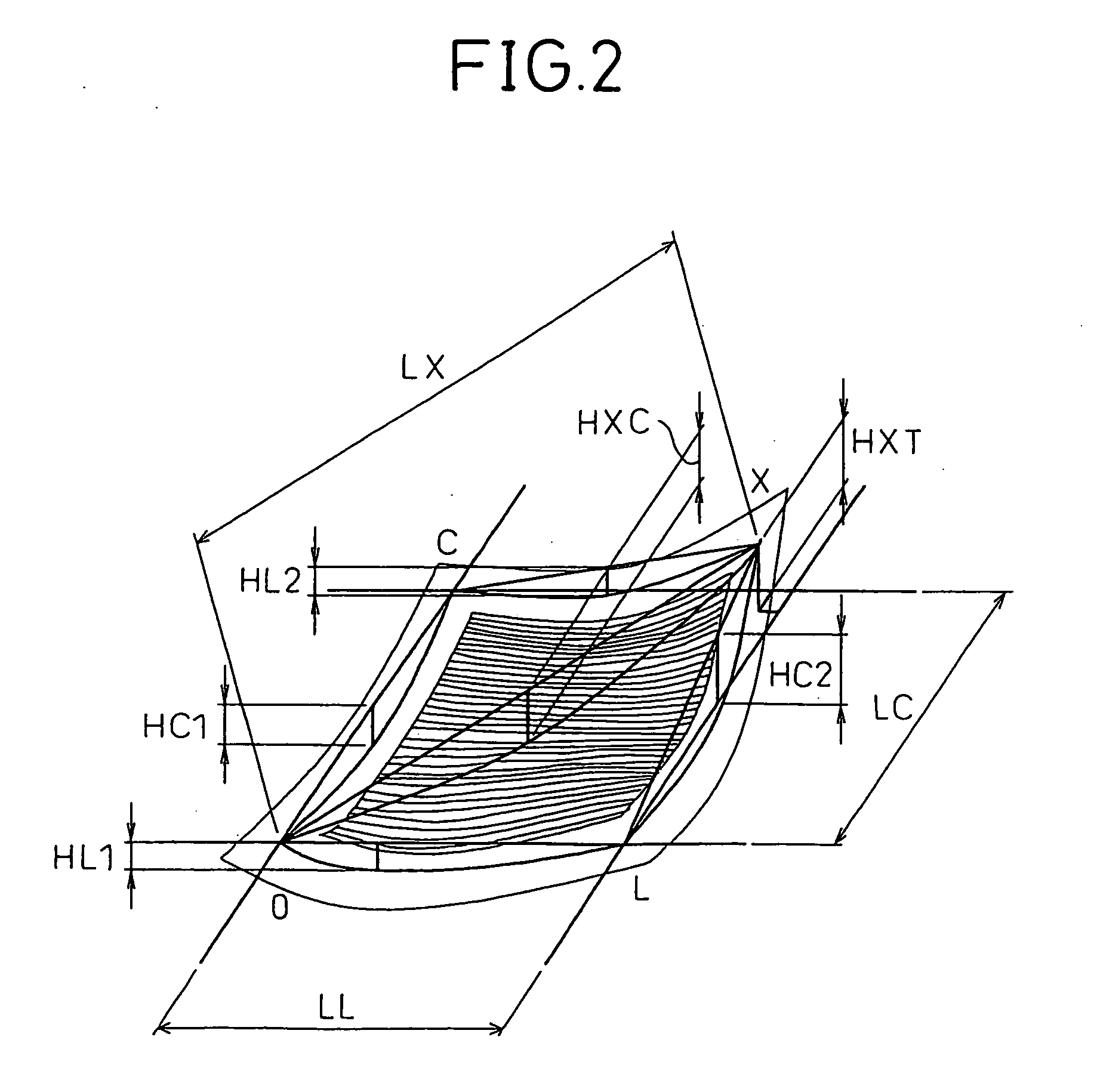Method of treatment for imparting conductivity to surface of separator-use base member of solid polymer type fuel cell
- Summary
- Abstract
- Description
- Claims
- Application Information
AI Technical Summary
Benefits of technology
Problems solved by technology
Method used
Image
Examples
example 1
[0058]A separator-use base member 1 of outer dimensions of 150 mm×150 mm×0.15 mm (thickness) made of titanium was prepared. As conductive compound particles 3, 40 g of vanadium carbide (VC) of an average particle size of 2 μm and 600 g of an ethanol solution were charged into a tank of a not shown pressurized type coating tank apparatus having an inside diameter of 97 mm and an inside capacity of 1 liter. A stirring unit was driven to mix these and prepare a suspension. Note that the area of the surface of the titanium separator-use base member 1 to be imparted conductivity, that is, the area of one side of the separator-use base member 1 spray coated with the suspension to form a conductive compound particle-coated layer and blasted by the blast particles to driven in the conductive compound particles to anchor them, was made 100×100 mm=10,000 mm2 (100 cm2). Note that, the weights of the conductive compound particles 3 and ethanol solution show the weights charged for mixing and pr...
example 2
[0064]100 g of TaN of an average particle size of 4 μm and 600 g of an ethanol solution were charged into the tank of a pressurized type coating tank apparatus similar to Example 1 to mix and prepare a suspension. Next, the suspension in the tank was pressurized and fired from a spray gun so as to spray coat the surface of a separator-use base member 1 having the same outer dimension as Example 1 of 150 mm×150 mm×0.15 mm (thickness) and made of titanium by an amount of coating per unit area of 1.0 mg / cm2. The rest of the test conditions were the same as in Example 1.
example 3
[0065]40 g of VC of an average particle size of 2 μm and 600 g of an ethanol solution were charged into the tank of a pressurized type coating tank apparatus similar to Example 1 to mix and prepare a suspension. Next, the suspension in the tank was pressurized and fired from a spray gun so as to spray coat the surface of a separator-use base member 1 having the same outer dimension as Example 1 of 150 mm×150 mm×0.15 mm (thickness) and made of titanium by an amount of coating per unit area of 0.2 mg / cm2 and was dried. After this, using, as the blast particles used in step B of anchoring the conductive compound particles, TiN of an average particle size of 100 μm and a pressure of 0.018 MPa, the conductive compound particle-coated layer 2 formed on the surface of the separator-use base member 1 was blasted. The rest of the test conditions were the same as in Example 1.
PUM
 Login to View More
Login to View More Abstract
Description
Claims
Application Information
 Login to View More
Login to View More - R&D
- Intellectual Property
- Life Sciences
- Materials
- Tech Scout
- Unparalleled Data Quality
- Higher Quality Content
- 60% Fewer Hallucinations
Browse by: Latest US Patents, China's latest patents, Technical Efficacy Thesaurus, Application Domain, Technology Topic, Popular Technical Reports.
© 2025 PatSnap. All rights reserved.Legal|Privacy policy|Modern Slavery Act Transparency Statement|Sitemap|About US| Contact US: help@patsnap.com



